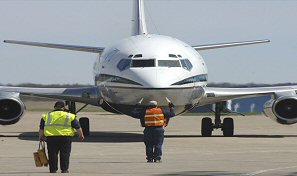Aviation maintenance technicians work under deadlines to inspect and maintain aircraft in accordance with international regulations and standards.

Aviation maintenance technicians work under deadlines to inspect and maintain aircraft in accordance with international regulations and standards.
Categories of positions in this group include:
Cabin Service
Ramp Service
Field Operation Service
Passenger Service
It’s the job of the aviation maintenance technician to ensure that the aircraft is in top working order and to then repair any problems before it leaves the ground. This career requires a specialized education.
Providing outstanding aircraft maintenance that meets and exceeds both safety standards and clients’ expectations comes down to training and experience — but most of all, it depends on a solid, well-functioning team.
Mediocre teams look at every aircraft as a job — or worse, they look at every repair simply as a “problem,” and a source of revenue.
The best team members treat each aircraft as though it belonged to them. A good way to get into this habit is to encourage team members to ask, “What would I want done if it were my aircraft?”
That might mean going one step beyond fixing an issue to find out what’s causing the need for a repair. Or it may mean being proactive about preventive maintenance.
Ramp handling services ensure the efficient turnaround of aircraft so that flights stay on schedule. This course offers an introduction to ramp services as well as the ground handling standards and safety requirements you need to know to work safely on the ramp.
Cabin maintenance repairs and maintains aircraft cabin parts and components. Performs inspection, repair and refurbishment work in the cabin and all interior equipment. Replaces carpets and in-lays. Support technicians in all removal and installation of cabin equipment except electrical lighting devices.
Passenger and Baggage check-in procedures (airport and off-site) Conditions of passenger and baggage carriage, boarding procedures and flight close-out messaging. Dangerous Goods regulations awareness for passenger service agents. Managing passenger interactions.
